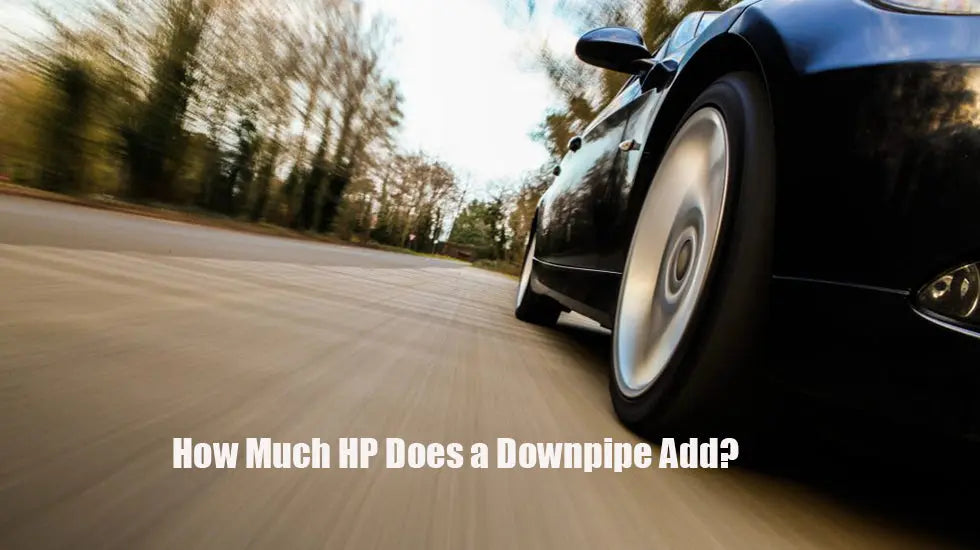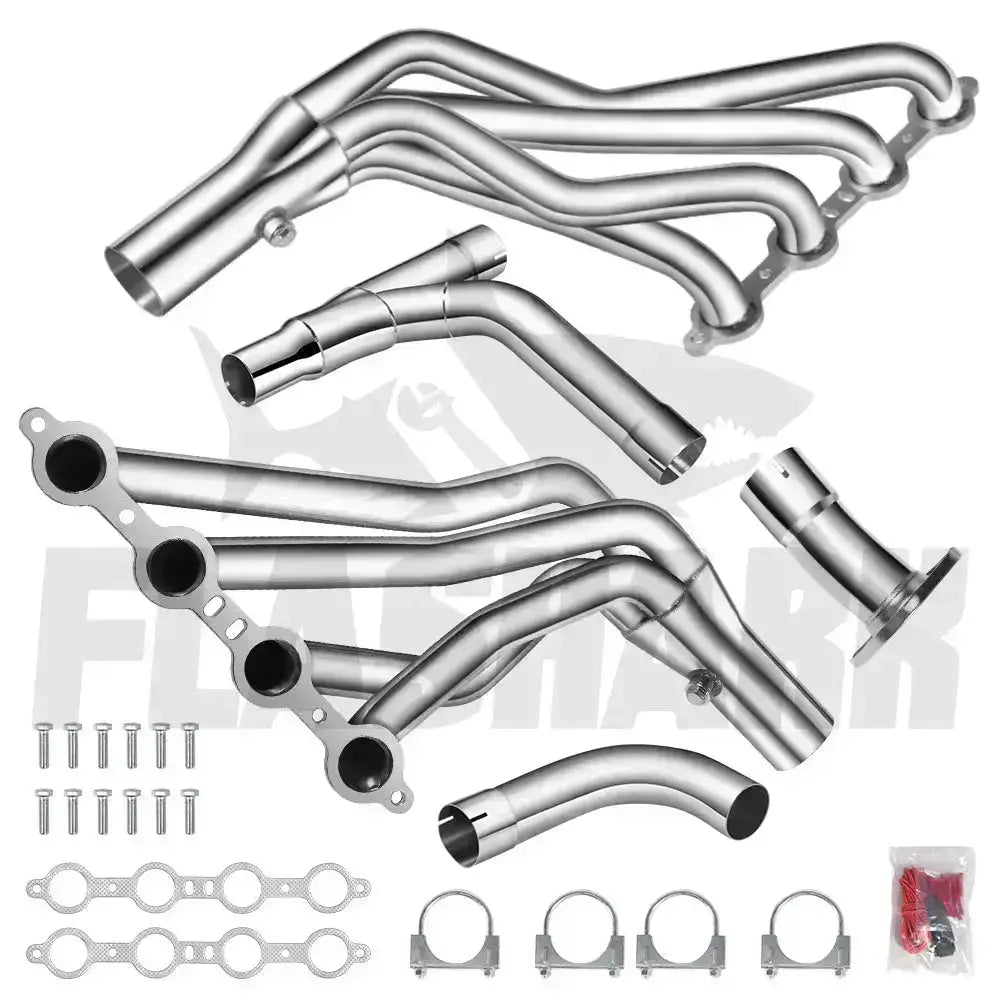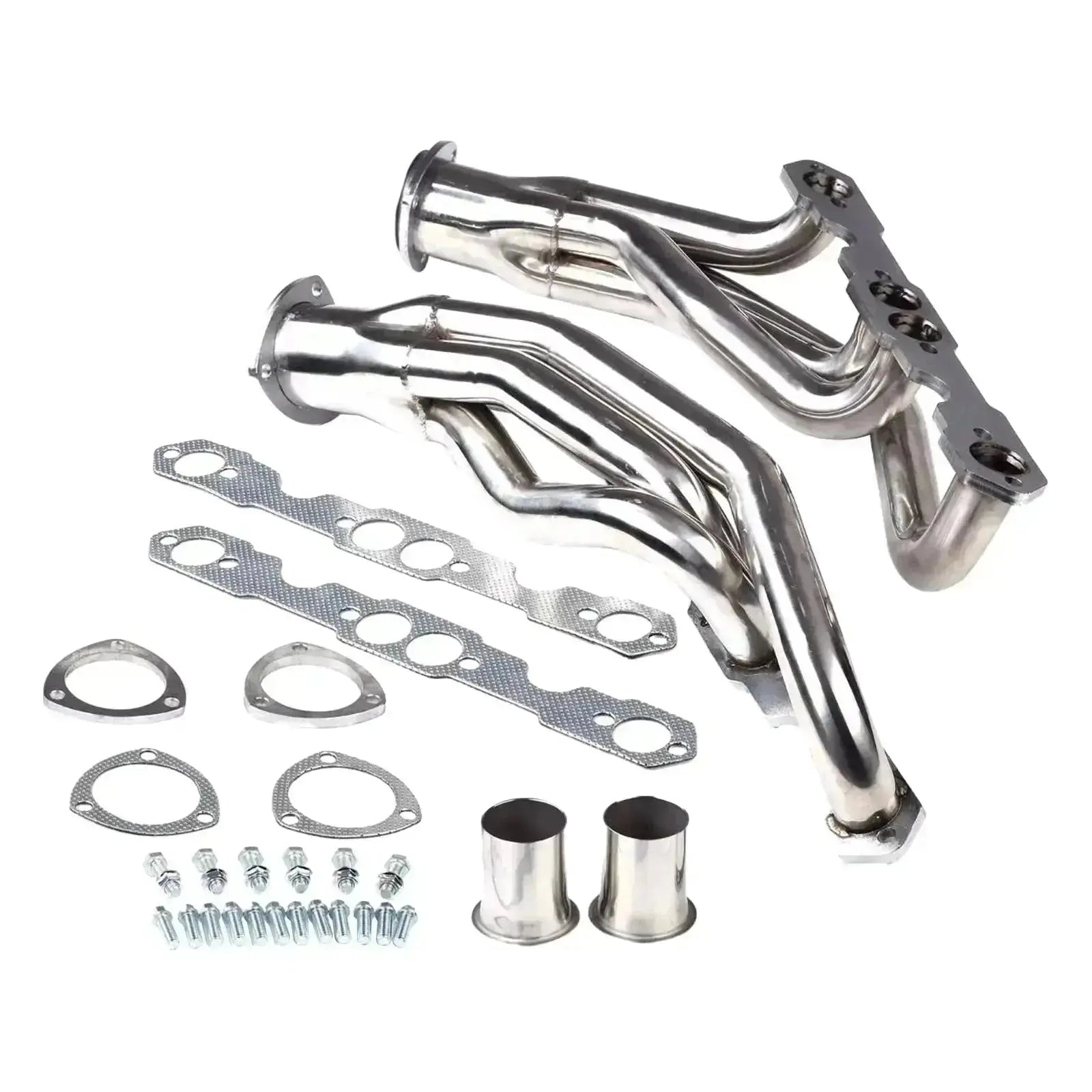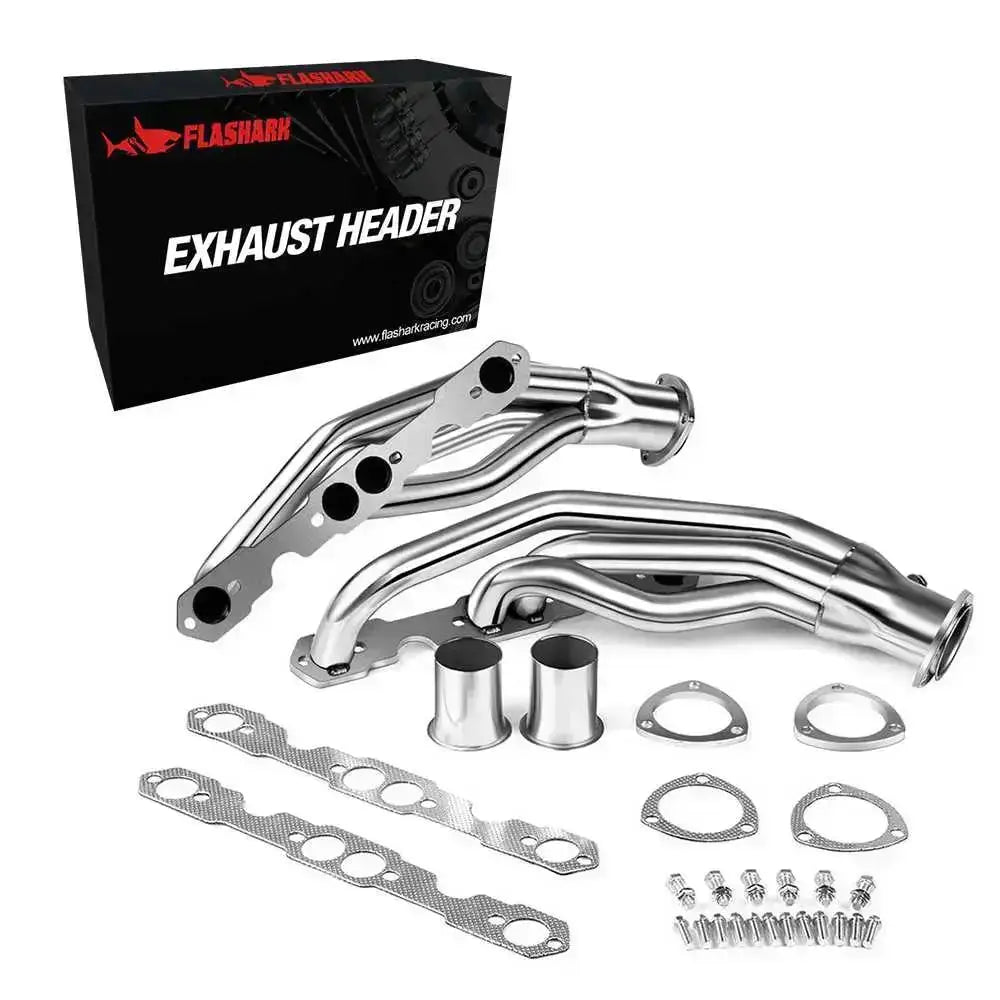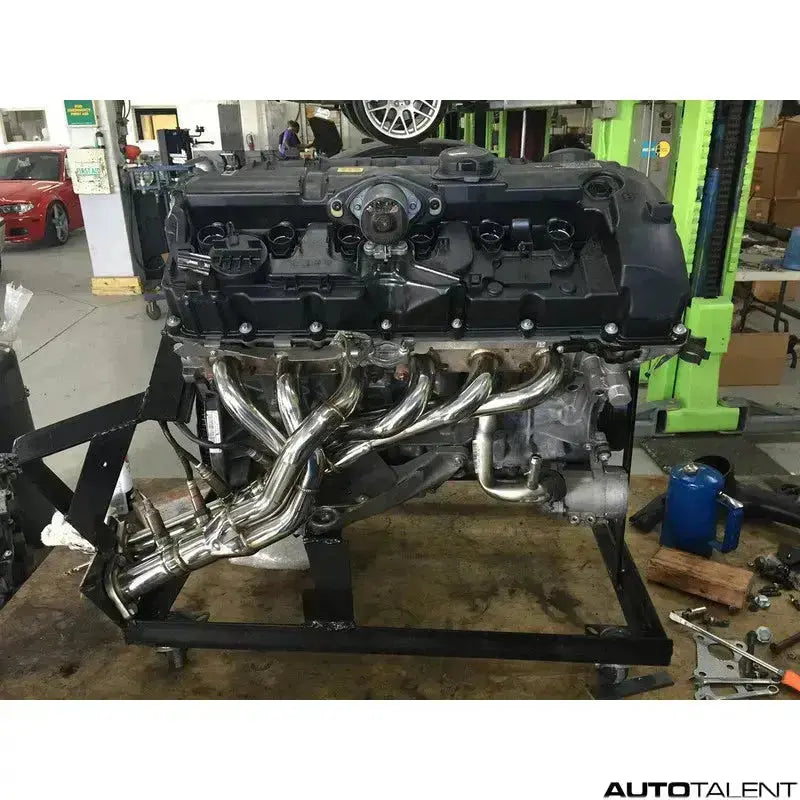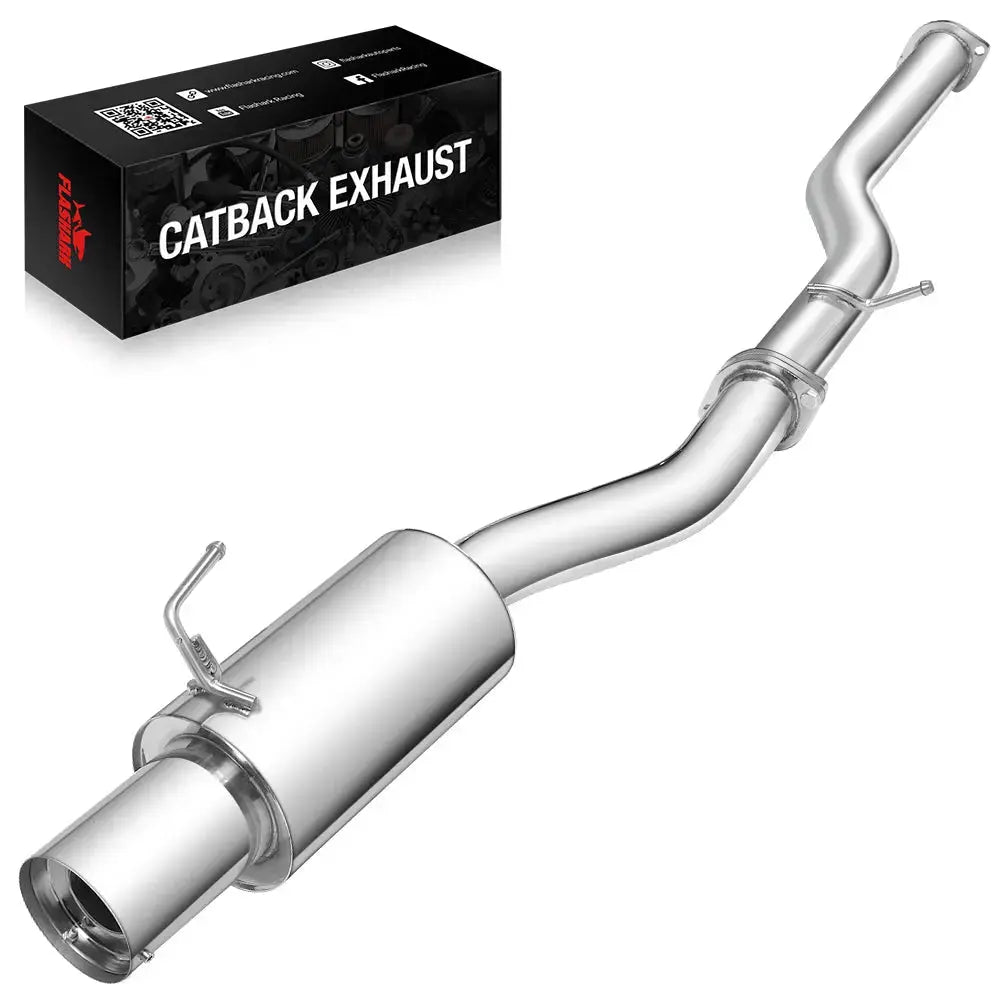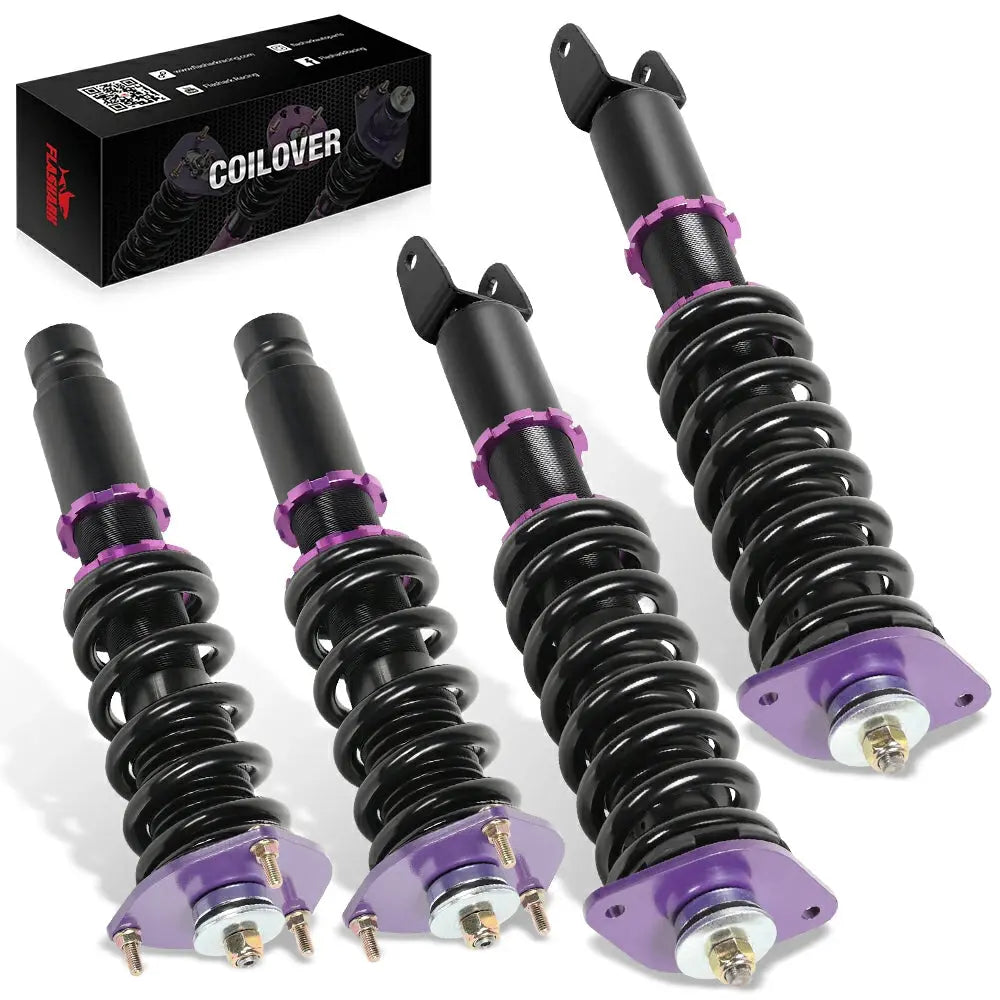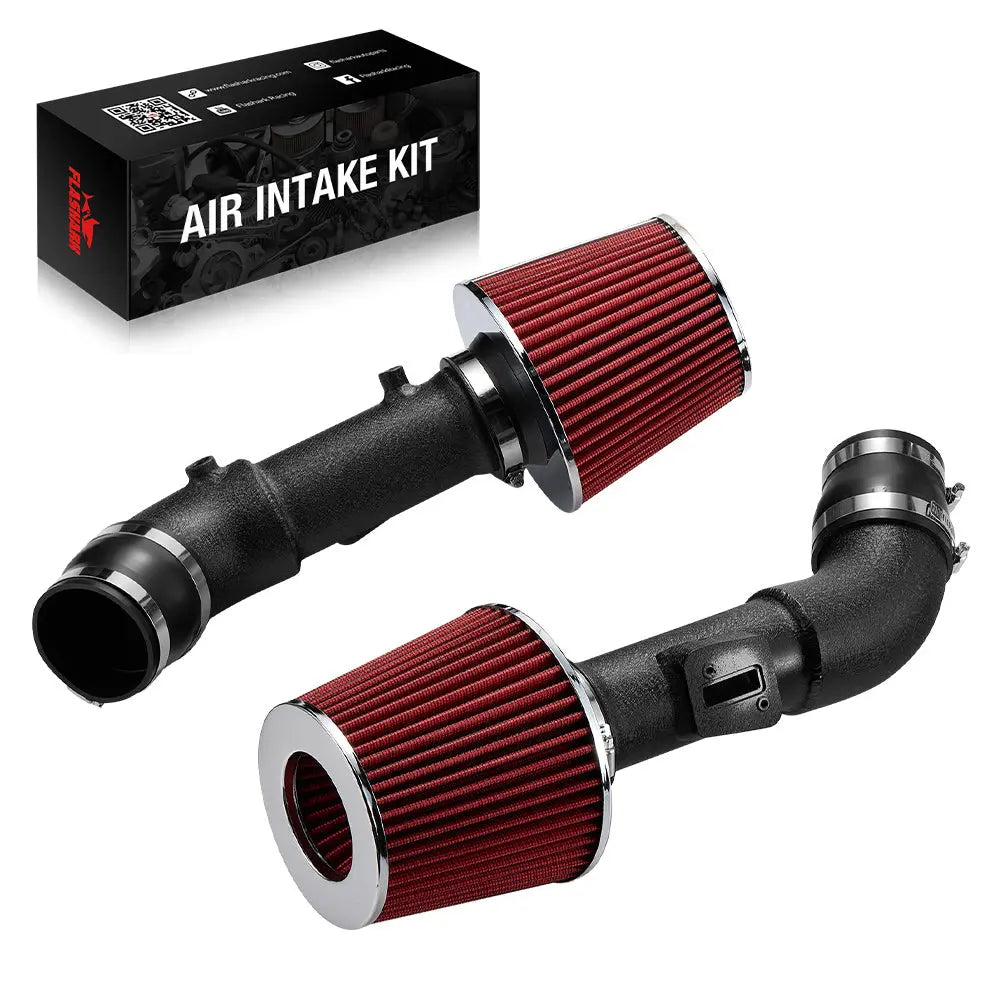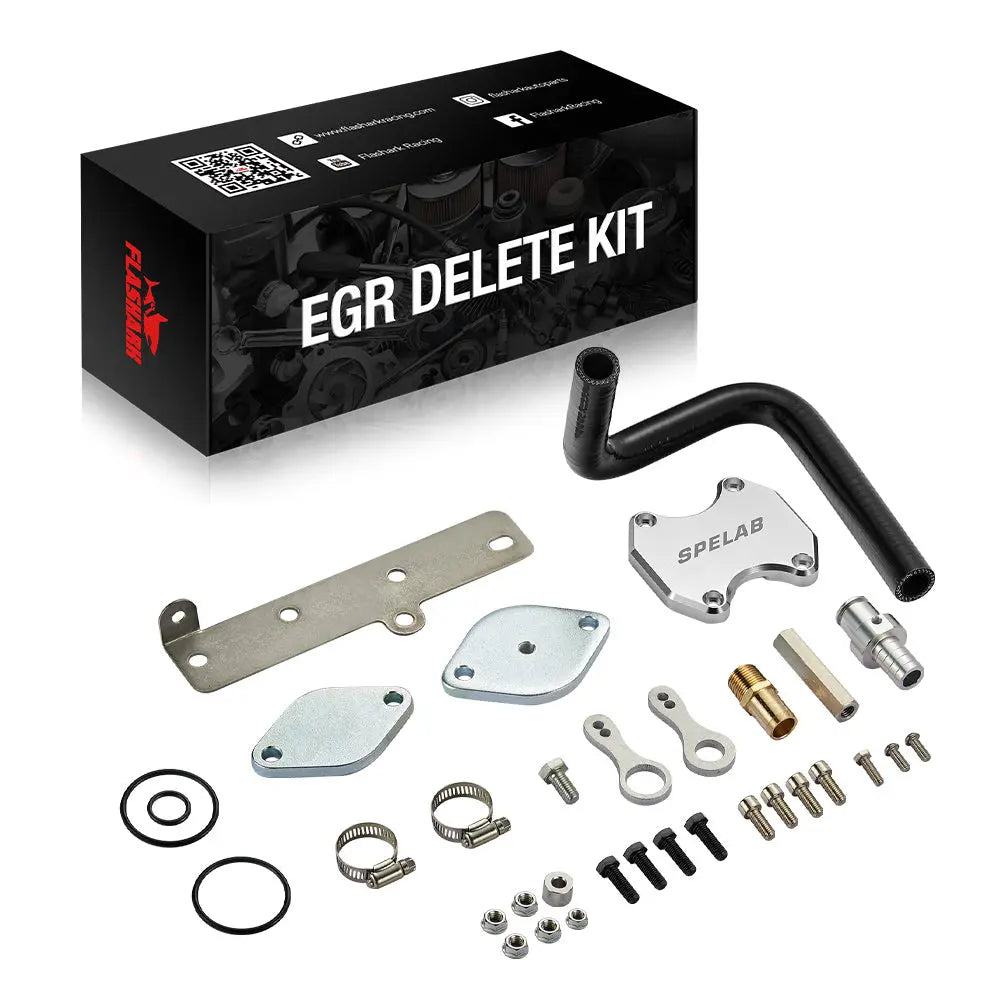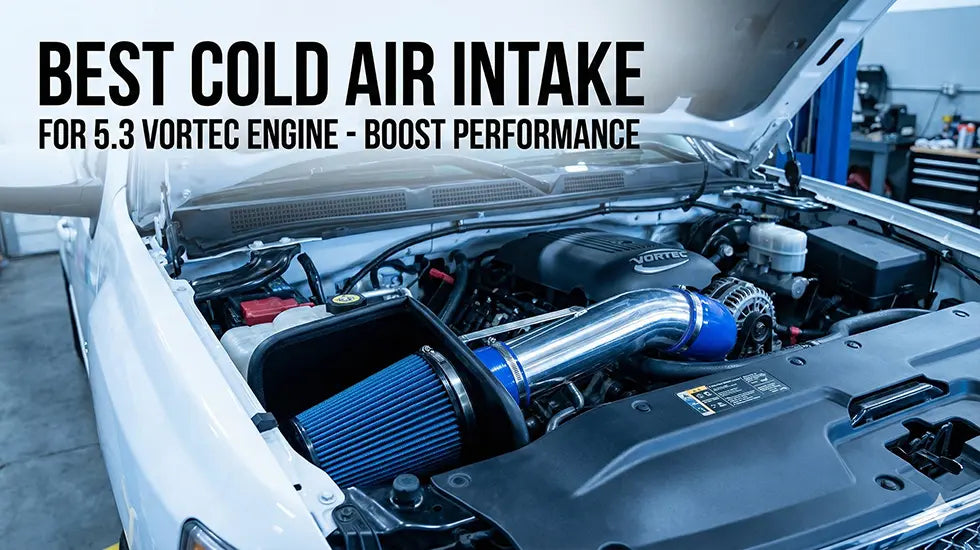A downpipe is a key component of a turbocharged vehicle's exhaust system. It serves as the connection between the turbocharger and the rest of the exhaust system. The primary role of a downpipe is to expel exhaust gases from the turbo and direct them into the rest of the exhaust system. However, its design plays a significant role in how efficiently this process occurs.
In stock setups, the downpipe is often restrictive, with smaller diameters and several bends that create backpressure. This backpressure can hinder the turbo’s efficiency, affecting the vehicle’s performance. A high-flow downpipe addresses this by providing a larger diameter and smoother path for exhaust gases, allowing for faster spool times and increased power output. This results in noticeable improvements in horsepower and overall engine performance, especially for turbocharged engines.
The Mechanism Behind Downpipe Performance Gains
The improvements in engine performance that come with installing a high-flow downpipe can be attributed to several factors, primarily revolving around the reduction of exhaust backpressure and the enhancement of exhaust flow. Below, we explore how these elements contribute to the horsepower gains.

Exhaust Backpressure
When exhaust gases exit the engine, they encounter resistance, known as backpressure. This resistance occurs due to the narrow pathways and bends in the exhaust system, which can make it harder for the turbo to expel gases. The higher the backpressure, the slower the turbo spools, and the less power it can produce.
A high-flow downpipe helps reduce backpressure by offering a more direct and less restrictive route for exhaust gases to travel. With less resistance, the turbo can spool faster and operate more efficiently, leading to an increase in horsepower. The result is a more responsive and powerful engine, particularly at lower RPMs.
Flow Efficiency
In addition to reducing backpressure, a high-flow downpipe improves exhaust flow efficiency. Traditional stock downpipes tend to have a smaller diameter and more bends, which can cause exhaust gases to slow down or encounter turbulence. A performance downpipe, however, is typically designed with larger pipes and smoother bends. This design allows exhaust gases to flow more freely, reducing restrictions and improving the turbo’s ability to process exhaust gases.
By enhancing flow efficiency, a downpipe ensures that the turbocharger has an easier time evacuating exhaust gases, which directly contributes to the improvement in overall engine performance and the increase in horsepower.
Turbocharger Efficiency
A turbocharger relies on exhaust gases to generate power. The faster these gases can exit the system, the more efficiently the turbo can operate. A well-designed downpipe helps improve turbocharger efficiency by allowing exhaust gases to flow more freely, which reduces turbo lag and enables faster spool times.
This improvement in turbo efficiency means that the engine can reach higher boost levels more quickly, which ultimately increases horsepower. In turbocharged vehicles, this enhanced turbo response results in a more dynamic and powerful driving experience, with noticeable improvements in acceleration and throttle response.
Material and Design
The material and design of a downpipe can also affect its performance. Most performance downpipes are made of stainless steel, which is durable, heat-resistant, and highly resistant to corrosion. Some high-end downpipes are even ceramic-coated to further reduce heat transfer and enhance exhaust flow.
The design elements of the downpipe—such as the diameter, length, and smoothness of the bends—also play a critical role in its ability to improve exhaust flow. A well-engineered downpipe reduces turbulence and maximizes flow efficiency, ensuring that the turbocharger operates at its best, which leads to more power.
How Much Horsepower Can You Expect from a Downpipe?
When considering an upgrade to a high-flow downpipe, many car enthusiasts wonder exactly how much horsepower they can expect to gain. The horsepower increase can vary depending on several factors, including the type of vehicle, the turbocharger setup, and other modifications. However, there are some general expectations that most turbocharged vehicles can experience.

Typical HP Gains
For most turbocharged vehicles, installing a high-flow downpipe typically results in a 15-30 horsepower increase. This range can vary depending on the specific vehicle and its performance mods. For example, a BMW 335i or Subaru WRX, which are commonly modified with performance downpipes, may see a noticeable boost in power due to the reduction in backpressure and improved turbo efficiency.
Factors That Affect HP Gains
Several factors influence the amount of horsepower you can gain from a downpipe upgrade. These include:
-
Vehicle Make and Model: Different vehicles respond differently to exhaust modifications. For example, smaller turbocharged engines like those in the Mazda Speed3 may see larger performance gains from a downpipe compared to larger engines.
-
Turbo Size: Larger turbos tend to benefit more from improved exhaust flow, meaning vehicles with larger turbos often see greater performance improvements from a downpipe upgrade.
-
Exhaust Configuration: The gains you see from a downpipe may also depend on whether you’ve upgraded other parts of your exhaust system, such as the cat-back system or the intercooler. A full exhaust upgrade tends to amplify the gains made by the downpipe alone.
-
ECU Tuning: To maximize the benefits of a downpipe, many vehicles require ECU tuning to adjust the air-fuel ratio and timing. This ensures the engine can adapt to the new exhaust flow and fully take advantage of the additional horsepower.
Real-World HP Increases
Many car owners report real-world horsepower gains of around 20-30 HP after installing a high-flow downpipe. However, the exact gain depends on the specifics of your vehicle, as well as any additional modifications that might be made. For example, some performance vehicles may see as much as 50+ horsepower with a combination of downpipe, ECU tuning, and other supporting mods.
How Downpipe Upgrades Affect Different Vehicle Types
The effects of a downpipe upgrade can vary significantly depending on the type of vehicle. Let’s take a look at how different vehicles respond to this modification.
Turbocharged Vehicles
For turbocharged vehicles, installing a performance downpipe can yield significant improvements in power. The reduction in exhaust backpressure and the increase in exhaust flow efficiency allow the turbo to spool faster and produce more boost. This leads to higher horsepower and a more responsive engine, especially at lower RPMs.

Examples of turbocharged vehicles that benefit greatly from a downpipe upgrade include the Subaru WRX, BMW 335i, and Volkswagen GTI. These cars often have restrictive stock downpipes that can significantly hinder turbo performance, making a downpipe upgrade a popular and effective modification.
NA vs. Turbo Engines
In naturally aspirated (NA) engines, a downpipe upgrade will not have as significant an impact on horsepower as it does on turbocharged engines. While a downpipe can still improve exhaust flow and throttle response, the gains in horsepower will be much smaller compared to a turbocharged engine. Turbo engines rely more heavily on exhaust flow to generate power, so a high-flow downpipe has a greater impact on these vehicles.
Car Modifications
The overall effectiveness of a downpipe upgrade also depends on the extent of other modifications to the vehicle. If the downpipe is paired with other upgrades, such as a larger turbo, high-flow intercooler, or cat-back exhaust system, the horsepower gains can be more substantial. On the other hand, if the downpipe is the only modification, the horsepower gains may be more modest.
Additional Benefits of Installing a Performance Downpipe
Besides the obvious horsepower gains, a high-flow downpipe offers several other benefits that improve your driving experience.
Improved Throttle Response
One of the most noticeable improvements after installing a downpipe is throttle response. With the reduction in turbo lag and faster spool times, your car will respond more quickly when you press the accelerator. This is particularly beneficial for performance driving or track use, where quick acceleration is crucial.
Better Exhaust Note
A high-flow downpipe can also improve the exhaust note of your vehicle. By allowing exhaust gases to flow more freely, the sound produced by the exhaust system becomes more aggressive and throaty. For many car enthusiasts, this enhanced exhaust sound is a key part of the appeal of performance modifications.
Improved Fuel Efficiency (In Some Cases)
While the primary goal of a downpipe is to increase horsepower, it can also result in slight improvements in fuel efficiency. This is because the engine is operating more efficiently due to the reduced backpressure and improved exhaust flow. However, the impact on fuel economy may be marginal and is more noticeable in lighter driving conditions.
Choosing the Right Downpipe for Your Vehicle
When selecting a downpipe, it’s important to consider several factors to ensure compatibility and maximize performance.
Material Considerations
Most performance downpipes are made from stainless steel, which is durable, heat-resistant, and corrosion-resistant. For optimal performance, you might also consider ceramic-coated downpipes, which can reduce heat transfer and help maintain exhaust gas temperatures.
Compatibility
Not all downpipes are compatible with all vehicles. Be sure to select a downpipe that is specifically designed for your vehicle make and model. This ensures proper fitment and functionality. Consider whether you need a catless downpipe or one with a high-flow catalytic converter, depending on your goals and local emissions regulations.
Quality and Design
The design and quality of the downpipe also affect its performance. Look for downpipes with high-quality welds, smooth bends, and precise dimensions. A poorly designed downpipe may actually reduce performance or cause issues with the turbocharger. Choose brands that offer detailed specifications and have a reputation for producing high-quality performance parts.
Conclusion: Is a Downpipe Worth the Upgrade for Your Vehicle?
Upgrading to a high-flow downpipe can provide a significant performance boost for turbocharged vehicles. With horsepower gains typically in the range of 15-30 HP, the reduction in exhaust backpressure and improved turbocharger efficiency offer noticeable improvements in acceleration and throttle response.
If you're looking to unlock more power and improve the overall driving experience of your turbocharged car, a downpipe upgrade is a valuable modification. However, it’s important to consider the full scope of potential benefits, including sound, turbo efficiency, and potential fuel economy gains, as well as the costs and legal considerations.

